Do you have a question about the Lifebreath 95MAX series and is the answer not in the manual?
Manual must be read before unit installation.
Disconnect power, confirm polarity, use voltmeter, ensure grounding.
Check for blockages like leaves, snow, or frost.
Instructions for removing and cleaning the washable air filters.
Steps for removing, cleaning, and reinstalling the heat recovery core.
Clean condensate drain line, P-trap, and internal ductwork.
Turn off power before any service or maintenance.
Connects HRV to furnace return for ventilation.
Draws stale air from specific rooms and supplies fresh air.
Stand-alone system drawing stale and supplying fresh air.
Key points and diagram for the simplified installation.
Draws stale air from specific rooms and supplies fresh air.
Warning about the necessity of a backdraft damper for stale air ducts.
Stand-alone system drawing stale and supplying fresh air.
Guidance on choosing an appropriate installation space.
Instructions for hanging the unit using adjustable straps.
Steps to level the unit for proper condensate drainage.
Emphasizes that installation and service must be done by qualified personnel.
Installing the control on a switch box or surface mount.
How to separate the control's face and back plates.
Marking locations and drilling holes for control mounting.
Connecting wires and attaching the control's back plate.
Aligning and attaching the face plate to the back plate.
Connecting the control wire to the ventilator's terminal block.
Ensures HRV operates when the furnace blower is active.
Ensures balanced air introduction and exhaustion for efficiency.
Steps to take before starting the air balancing procedure.
Drilling holes for pitot tube insertion in air streams.
Inserting pitot tube and averaging reading for stale air.
Repeating measurement for fresh air stream.
Sealing holes and adjusting dampers for balanced airflow.
Calculating airflow in CFM using velocity pressure and duct area.
Connecting hoses to magnehelic gauge or manometer.
Inserting rubber fittings into the HRV door ports.
Removing covers to access the door ports.
Running the HRV and furnace blower at high speed.
Connecting gauge to ports and recording readings for both air streams.
Using charts to determine airflow rates based on readings.
Adjusting dampers to equalize fresh and stale airflows.
Removing fittings and reinstalling port covers.
Identifies causes and solutions for low or unbalanced airflow.
Addresses issues with cold supply air temperature.
Solutions for dehumidistat not operating or set incorrectly.
Addresses causes of high humidity and window condensation.
Solutions for low humidity and HRV speed settings.
Identifies causes and solutions for frost formation.
Addresses issues with condensation or ice in insulated ductwork.
Solutions for water accumulation in the HRV unit.
| Brand | Lifebreath |
|---|---|
| Model | 95MAX series |
| Category | Fan |
| Language | English |

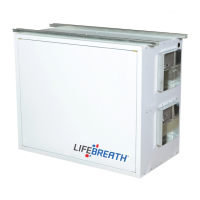

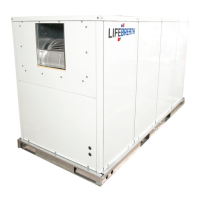
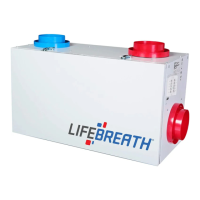
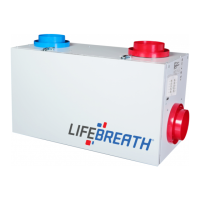
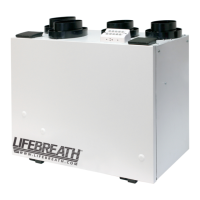

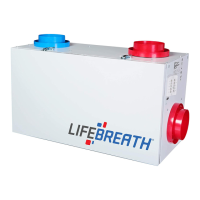


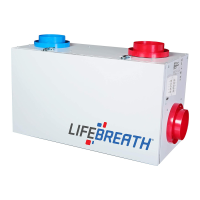
